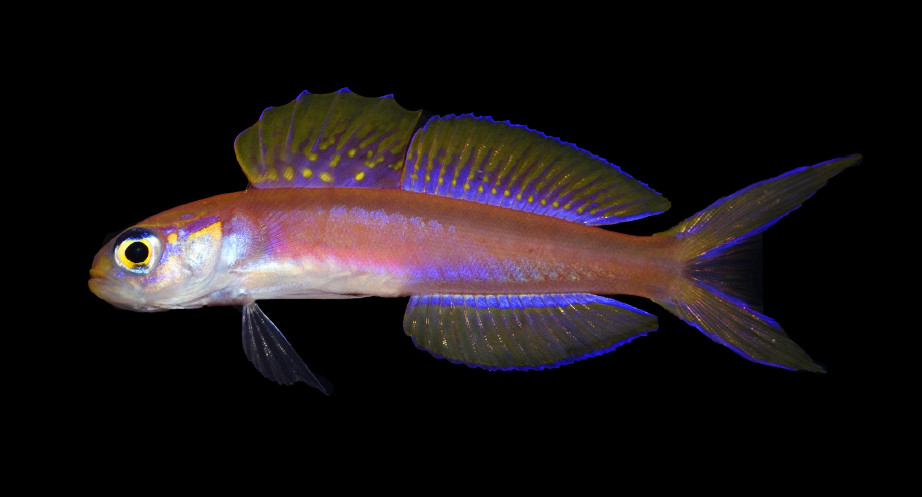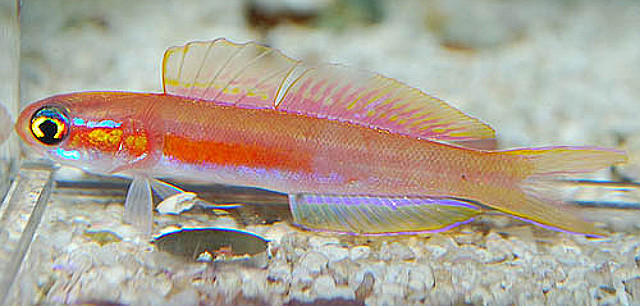
Navigobius kaguya, 49.2 mm SL, paratype, female, off coast of Ida, Zambales Province, Luzon, Philippines. Credit: S.K. Tea / Gill et al. 2017
Earlier this year, I wrote at length about a colorful new species of dartfish which was collected from the Philippines for the aquarium trade, and, just a few months later, it now has a proper scientific name. Kaguya’s Dartfish (Navigobius kaguya) is described in the latest edition of Zootaxa based on this aquarium specimen (collected by RVS Fishworld), as well as an additional specimen from Okinawa that dates back to 1994. Yes, this fish has been known to Japanese divers and researchers for decades but is only now finally being given some proper recognition.
For those of you not well-versed in Japanese folk tales, Kaguya is the protagonist in The Tale of the Bamboo Cutter (竹取物語), a story which you might know better from the 2013 Studio Ghibli anime The Tale of the Princess Kaguya. Spoiler alert: she’s a moon princess. The name was chosen by students participating in a climate change workshop at the University of Sydney and apparently alludes to the yellow markings of this fish’s dorsal fin, which are said to resemble the graphics from a moon phase chart. You’ll have to use your imagination a bit too see that, but it’s a nice way to tie this primarily Japanese fish to the culture of its homeland.
https://youtu.be/UAYxDVha8IE?t=141
Compared to its cousins in Navigobius, this species is identified most readily by the shape and coloration of the dorsal fin, which is relatively tall and deeply incised in comparison to N. dewa, but lacking the dramatic filamentous extensions seen in N. vittatus. A similar fish is also known from aquarium imports that have originated from Bali and the Maldives, but these differ in having a prominent orange band along the midbody. In all likelihood, this is an undescribed Indian Ocean sister species, but we won’t known this for sure until specimens can be studied.
Lastly, the recently described N. khanhoa of Vietnam is suggested to actually be a misidentified juvenile of the ribbongoby genus Oxymetopon, due to several morphological discrepancies—the dorsal and anal fins have too many rays… the caudal fin isn’t noticeably lobed… the mouth is protrusible… and apparently its preoperculum has a groove which ought not be there. The authors don’t go so far as to formally synonymize the two, as more specimens are needed to confirm this, but this would leave Navigobius with just three valid taxa in the West Pacific, along with the presumably undescribed Indian Ocean fish. Are there others yet awaiting discovery, or is this really all the Navigobius in the world?
- Gill, A.C., Tea, Y. and Senou, H. (2017) Navigobius kaguya, new species of ptereleotrine goby (Teleostei: Gobiidae) from the West Pacific. Zootaxa 4347 (2): 371–380 https://doi.org/10.11646/zootaxa.4347.2.11











0 Comments